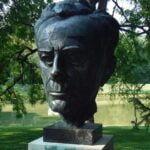Construction of the Berlin Wall began on Aug. 13, 1961. Erected almost overnight to prevent East Berliners from defecting to the West, the wall became the most conspicuous symbol of the Cold War’s division of Europe.
In August 1989, I was enjoying the company of my colleague and friend—a young German scientist named Keil—and the beauty of the late summer in East Berlin. We were walking along Unter Der Linden and approaching the Brandenburg Tür. At the end of the street, a wall popped up in front of us. It was the infamous Berlin Wall.
With excitement and a boastful spirit, I turned to my friend: “Do you know what? This wall does not matter much to us Bulgarians anymore.” Because of some strange twist in the Bulgarian communist government policy, we had recently been allowed to visit West Berlin without a visa. The night before meeting Keil, I had gone to West Berlin and walked its streets. I was eagerly sharing with him my excitement about the newly discovered face of a Western city.
After some moments of silence, Keil quietly replied: “I had an aunt living out there. She was the last of my relatives of my parents’ generation. She used to come to see us on this side of the wall from time to time, and I loved her very much. She reminded me of my mother. My aunt died two weeks ago, but they did not give me the permission to say to her my last farewell. You are luckier than we Germans are.”
Three months later, the wall was breached. On my next visit to Berlin, I was able to buy a piece of the wall as a souvenir. Now every German could walk through it. The remnants of the wall became a symbol of a hope for a united Europe. There was a euphoric dream that finally, the long-separated peoples of Europe would live in a peaceful and prosperous community.
The wall had been the Iron Curtain separating two worlds. But indeed it was not iron. It was a “Nylon Curtain”—one through which you could see but not touch. As sudden as breaching the wall may have looked, cracks in it appeared much earlier. Confidence had waned in the system that so severely suppressed human freedom, creativity and prosperity.
These cracks appeared not just because of Western media, affluent tourists and the voices of dissidents, but also because of the witness and aspirations of God’s faithful people who would not yield to the ideological indoctrination.
The Berlin Wall is not there anymore, but other walls have succeeded it. Strangely enough, the world today seems divided as never before. Waiting in lines for visas or to check in for a flight to the United States or a European Union country somehow reminds some of us of a line at the wall’s Checkpoint Charlie.
Today, wall-less Europe is still just a distant dream. For some Eastern Europeans, the Berlin Wall simply moved closer to their borders. Now it is called the Schengen agreement—through which non-EU nationals remain subject to EU border checks.
But the “Schengen Wall” is not the only one to divide. There are many local fortresses being erected by the French followers of Le Pen, German Neo-Nazis, Dutch and Belgian right wingers, Austrian pro-fascists, and Spanish, Italian and Danish nationalists. Even the Czechs have their skinheads.
One wonders just how fast one wall replaces another and how long the dream of a wall-less Europe will have to wait.
Parush Parushev is director of applied theology at the International Baptist Theological Seminary in Prague, CzechRepublic.



